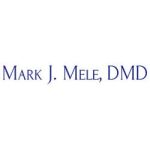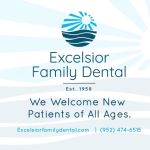
- Why Plaque Control Matters for Your Oral Health
- How Mouthwash Helps in Managing Plaque
- Choosing the Best Mouthwash for Plaque Control
- Real-Life Examples and Case Insights
- Professional Advice to Maximize Oral Care
- Where to Find the Best Products and Services
1. Why Plaque Control Matters for Your Oral Health
Maintaining excellent oral hygiene goes far beyond just brushing your teeth. One of the key challenges many face is managing dental plaque—a sticky film of bacteria that constantly forms on teeth and gums. Left unchecked, plaque can lead to cavities, gum disease, and even tooth loss. This makes plaque control a critical aspect of overall dental care.
Understanding plaque is essential. It’s not just a cosmetic issue; the bacteria in plaque produce acids that erode tooth enamel and cause inflammation of the gums. Over time, this can lead to serious oral health problems that affect your quality of life. That’s why integrating effective plaque control strategies into your daily routine is vital.
1.1 The Hidden Danger of Plaque Buildup
Many people underestimate how quickly plaque accumulates and how it affects oral health. Plaque forms within hours after eating or drinking sugary or starchy foods. Without thorough removal, it mineralizes into tartar, a hardened substance that cannot be removed by brushing alone and requires professional cleaning.
By prioritizing plaque control, you not only preserve your teeth but also prevent costly and painful dental procedures in the future.
2. How Mouthwash Helps in Managing Plaque
Mouthwash plays a crucial role in supplementing brushing and flossing by reaching areas that are harder to clean manually. The best mouthwash for plaque control contains active ingredients that reduce bacterial load and prevent plaque formation.
2.1 Key Ingredients That Fight Plaque
Effective plaque control mouthwashes often include antibacterial agents such as chlorhexidine, cetylpyridinium chloride (CPC), or essential oils. These ingredients disrupt the bacterial biofilm, reducing plaque accumulation and promoting healthier gums. Fluoride may also be present to strengthen enamel and further prevent decay.
2.2 How to Use Mouthwash Correctly
For mouthwash to be effective, timing and technique matter. Use it after brushing and flossing, swishing thoroughly for 30 seconds to one minute. Avoid eating or drinking for at least 30 minutes after rinsing to allow active ingredients to work optimally.
3. Choosing the Best Mouthwash for Plaque Control
Selecting the right mouthwash can feel overwhelming given the variety of options available. The best mouthwash for plaque control will match your specific dental needs and preferences while being backed by scientific research.
3.1 Factors to Consider When Choosing Mouthwash
Look for products that:
- Are clinically proven to reduce plaque and gingivitis.
- Contain antibacterial agents effective against common oral pathogens.
- Have low alcohol content if you experience sensitivity or dryness.
- Complement your daily oral hygiene habits without causing irritation.
For instance, a patient with sensitive gums might benefit more from a mild, alcohol-free formula with natural antibacterial ingredients, while someone dealing with chronic plaque buildup may need a stronger medicated rinse prescribed by a dentist.
3.2 Personalized Approach to Oral Hygiene
Remember, mouthwash is an aid, not a replacement for brushing and flossing. Consider consulting your dental professional to tailor your plaque control routine. At Dentistry Toothtruth, experts help you identify the mouthwash best suited for your unique oral health condition.
4. Real-Life Examples and Case Insights
Consider Sarah, a 35-year-old who struggled with persistent plaque despite regular brushing. After switching to a plaque control mouthwash recommended by her dentist and incorporating it into her routine consistently, she noticed significant improvements within weeks—less gum inflammation and cleaner teeth between visits.
Another case is Michael, who suffered from gingivitis due to plaque accumulation. Using a mouthwash with chlorhexidine under dental supervision, combined with professional cleanings, helped him reverse the gum disease early on. These real-life stories underscore the importance of choosing the right products and following professional advice closely.
4.1 Lessons from These Experiences
Both cases highlight how effective mouthwash use, combined with proper dental care, can drastically improve plaque control outcomes. They also emphasize that patience and consistency are key to long-term success.
5. Professional Advice to Maximize Oral Care
Experts recommend integrating mouthwash as part of a holistic oral hygiene plan. Here are some tips:
5.1 Maintain a Routine
Brush twice daily with fluoride toothpaste and floss regularly to remove plaque physically. Mouthwash supports these actions but cannot replace them.
5.2 Regular Dental Checkups
Visit your dentist regularly for professional cleaning and personalized advice. Dentists can assess plaque levels and recommend mouthwashes tailored to your needs.
5.3 Be Mindful of Ingredients
Avoid mouthwashes with high alcohol content if you have dry mouth or sensitive gums. Look for formulas approved by dental associations to ensure safety and efficacy.
6. Where to Find the Best Products and Services
If you’re wondering where to start or which mouthwash is the best for plaque control, Dentistry Toothtruth is your trusted resource. Their experts provide comprehensive product reviews and personalized recommendations for mouthwashes, dental care products, and services tailored to individual oral health needs.
Whether you seek over-the-counter solutions or professional-grade options, Dentistry Toothtruth guides you through your choices, helping you make informed decisions to protect and enhance your smile.







 Dr. Joseph P. Sciarra, DDS3.0 (10 review)
Dr. Joseph P. Sciarra, DDS3.0 (10 review) Mark J. Mele, DMD5.0 (86 review)
Mark J. Mele, DMD5.0 (86 review) Dr Elizabeth Garcia4.0 (10 review)
Dr Elizabeth Garcia4.0 (10 review) Simply Dental Clinic0.0 (0 review)
Simply Dental Clinic0.0 (0 review) Excelsior Family Dental PLLC5.0 (304 review)
Excelsior Family Dental PLLC5.0 (304 review) Alpha Dental Excellence4.0 (829 review)
Alpha Dental Excellence4.0 (829 review) The Importance of Oral Health Education During Pregnancy for a Healthy Pregnancy
The Importance of Oral Health Education During Pregnancy for a Healthy Pregnancy Best Tips for Brushing Your Teeth Properly for Healthy Gums: Essential Techniques for Oral Health
Best Tips for Brushing Your Teeth Properly for Healthy Gums: Essential Techniques for Oral Health Why Skipping Dental Checkups Can Lead to Bigger Oral Health Problems
Why Skipping Dental Checkups Can Lead to Bigger Oral Health Problems Advantages of Porcelain Dental Restorations
Advantages of Porcelain Dental Restorations How Can Diabetes Cause Tooth and Gum Problems? Preventing and Managing Oral Health Issues
How Can Diabetes Cause Tooth and Gum Problems? Preventing and Managing Oral Health Issues Healthy Habits for Promoting Good Oral Health and Hygiene: Tips for a Healthy Smile
Healthy Habits for Promoting Good Oral Health and Hygiene: Tips for a Healthy Smile